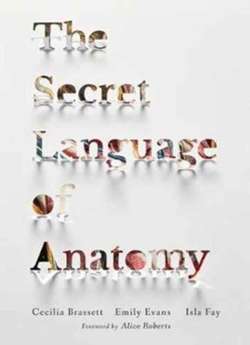The Secret Language of Anatomy
- The team behind this book were brought together by their connection to a single, remarkable place: the dissection facilities of the Human Anatomy Teaching Group at the Department of Physiology, Development and Neuroscience, University of Cambridge.
The team behind this book were brought together by their connection to a single, remarkable place: the dissection facilities of the Human Anatomy Teaching Group at the Department of Physiology, Development and Neuroscience, University of Cambridge. Here, anatomy is taught through human cadaveric dissection and applied anatomy sessions to first and second year medical students. Today's undergraduates benefit from a rich heritage of anatomical teaching and learning in Cambridge. 2016 marks the 300th anniversary of the establishment of the first Anatomical School at the University, whilst dissection within the Cambridge colleges dates back to the first half of the sixteenth century. Cambridge is one of a decreasing number of medical schools where undergraduates learn anatomy primarily through hands-on dissection. Our programme would not be possible without the unparalleled generosity of those who donate their bodies for anatomical teaching and research. Students' experiences of dissection remain with them throughout their medical careers, shaping their interactions with patients.Not only do they acquire a detailed understanding of the structure of the human body along with anatomical variations, but a dissection-based teaching programme also encourages the development of other key professional skills such as respect and empathy, teamwork and communication, haptic discrimination and manual dexterity. This book is therefore both a tribute both to the remarkable altruism of our donors to whom we are indebted, and to the significant difference that good anatomical knowledge makes to patient care. This book was originally conceived to help students navigate the perplexing language of anatomy, especially for those who have not previously studied Latin or Greek. However, we quickly realised the potential of an illustrated guide as an aid for all students learning the structure and function of the human body, as well as its likely appeal to a wider public. Together, the authors bring to the project a range of expertise in fields encompassing surgery, history, linguistics, medical illustration and, of course, human anatomy.
blklk












